Occlusal Adjustment: Key to Improving Your Bite
15 Jan 2025
Dentists can now repair your bite through a process called “occlusal Adjustment”
Did you know your smile and favorite coat have something in common?
Just like a zipper, your teeth are meant to fit together. This helps you eat, speak and protects your jaw.
Known as “occlusion,” how your teeth fit together is crucial. Your top teeth should slightly overlap your bottom teeth. Your molars (the teeth at the back) should align so you can bite down on food and chew.
When they don’t fit together, this is known as malocclusion. You might have heard of this by another name – an overbite, an underbite, or simply a crooked tooth.
When your teeth are not aligned, they can cause health problems. There are a few causes like bad habits or injury, but mainly, our mouths simply grow like this sometimes. It’s genetic.
Types of Malocclusion
When it comes to malocclusion or misaligned teeth, there are three types to know about:
What is Class I Malocclusion:
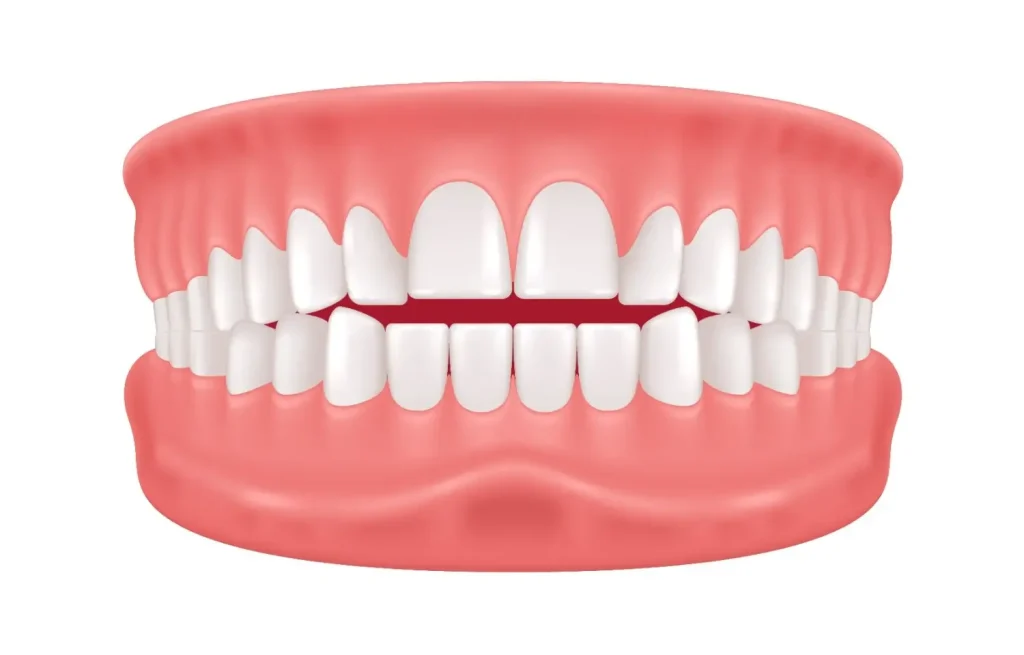
This is where some teeth are rotated, crowded, or spaced out. It is the least severe but needs to be treated by a dentist. It can cause excessive tooth wear (which is much harder to fix later on).
How common is it?
This impacts up to 55% of children up to the age of 17.
What is Class II Malocclusion:
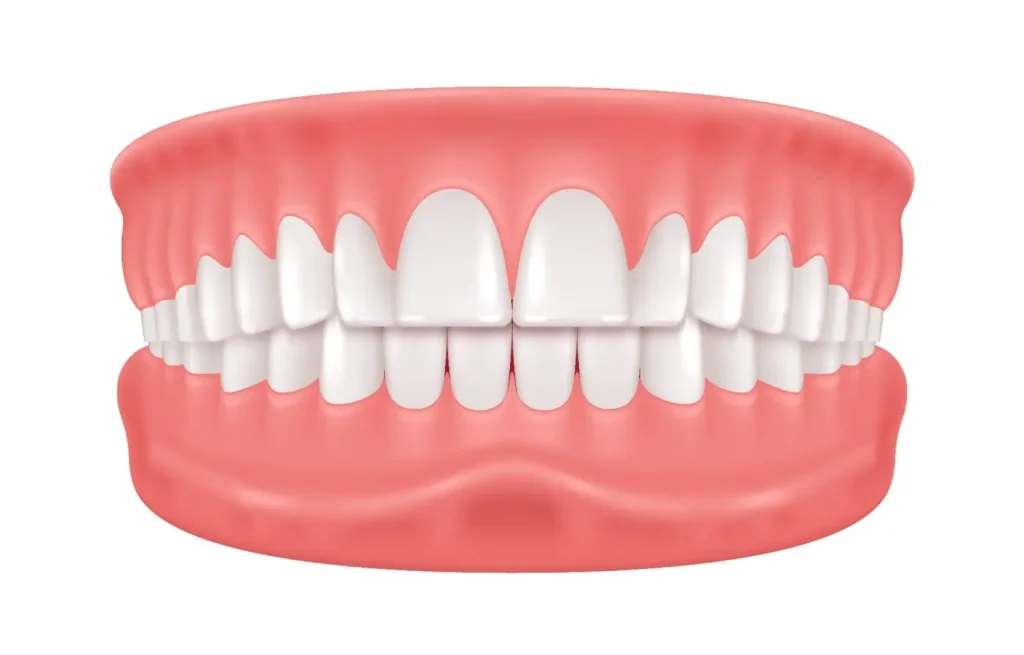
An overbite. It’s also called “retrognathism”. It’s when the top teeth overlap the bottom teeth. It’s severe because it causes problems with chewing and speaking.
H4: How Common Is It?
An overbite is more rare, affecting 15% of patients.
What is Class III Malocclusion
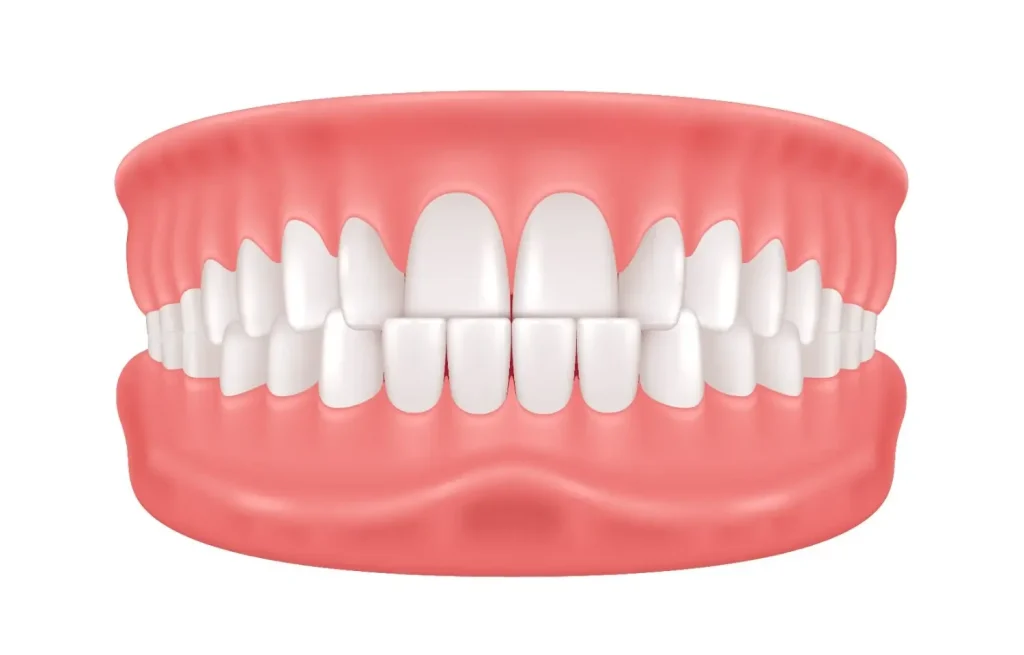
An underbite. It’s also known as “prognathism” and happens when the bottom teeth overlap the top teeth. It can also cause problems with your bite.
How Common is It?
This is the least common type, affecting about 1% of orthodontic patients.
Signs you Suffer from Malocclusion: Overbites, Underbites and Crooked Teeth
The good news is that dentists can fix all three types of malocclusions. This is a process called occlusal adjustment. It is the technical term for dental bite alignment. We will cover this in detail a little later.
But first, how do you recognize malocclusion? Knowing the signs means you can catch it early. Catching it early saves you from potential health problems and serious costs in the future.
Below is a list of quick questions to ask yourself or your children. If the answer to any of these is yes, it may mean you have malocclusion and should see a dentist as soon as possible:
- Do your teeth fit together? Are they crooked, overlapping, or have gaps?
- Do you have trouble chewing or biting?
- Do you have difficulty pronouncing certain words or sounds?
- Do you often bite your cheek or your tongue?
- Do you have high tooth mobility, or have you lost your teeth?
- Does your jaw hurt often or feel uncomfortable?
- Do you breathe through your mouth more than your nose?
How did you do? If you said yes, it doesn’t necessarily mean you need an occlusal adjustment, but it likely means there’s a problem.
A trip to the dentist will help you confirm any issues, stay healthy, and avoid problems in the future.
Signs You Might Need Occlusal Adjustments

If you answered yes to one of the questions above, you might be worried or wondering if this means you need occlusal adjustments.
Specific physical and dental signs can help narrow down the problem. If you’re aware of them, you will be treated more quickly.
Physical Symptoms
These are specific symptoms that you can feel outside of the mouth:
Jaw Pain
If you wake up with jaw pain or are using medication like ibuprofen or paracetamol as jaw pain relief then this is a symptom of malocclusion.
Popping or Clicking Sounds
If you hear popping or clicking when opening and closing your mouth, this could be because of TMJ or Temporomandibular Joint issues. Often, this is caused by bite misalignment.
Headaches
Bite problems often cause headaches. A quick test is to clench your teeth. If the pain is worse, it means you might not have a proper bite. This can sometimes affect the neck or face, too.
Chewing and Biting
Misaligned teeth often cause discomfort while eating. Kids will often chew less when they hurt, which can cause problems digesting food.
Speaking
Bite adjustment might be needed if you develop a lisp or can’t pronounce certain words and sounds.
Dental Issues
There are signs inside the mouth, too:
Feeling an Uneven Bite
If you feel that some teeth connect but others don’t, this could be a sign of a misaligned bite.
Excessive Tooth Wear
If your teeth are misaligned, you will often naturally grind them as your jaw tries to find its natural position. This can wear the teeth down, a clear sign of malocclusion.
Tooth Mobility
If you can move your teeth by applying pressure, it means that they are not aligned.
Damaged Teeth
Malocclusion can cause chips and cracks, sensitivity, and receding gums. It can even impact dental work like fillings, crowns, and implants.
The physical and dental symptoms can occur in a range, from mild to severe. In other cases, you may not notice any problems.
However, it’s always worth seeing your dentist. The cost of not doing so can be significant, and a trip to the dentist will catch any little problems before they become big problems.
The Importance of Proper Bite Alignment
What is the point in making sure your teeth fit together properly?
We’ve touched on some of the reasons. Proper bite alignment helps you chew, which improves digestion. Your mouth is healthier, meaning you won’t need to spend as much time or money going to the dentist. It also gives you a brighter, more natural smile.
Whether your focus is purely health or if you’d like a more confident smile, occlusal adjustment can help.
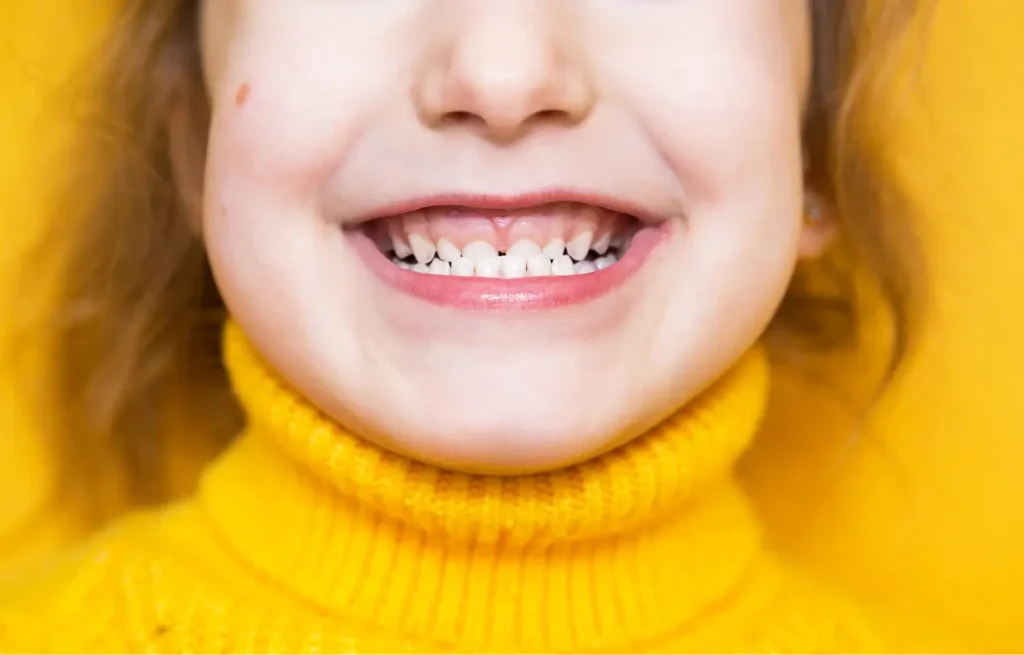
It’s Great For Your Health
Good tooth alignment makes them easier to clean, reducing plaque and tartar build-up. This is good because:
- It lowers the chances of tooth decay
- Reduces the chance of gum disease
- Makes tooth loss less likely
- Reduces excessive tooth wear and sensitivity
Having a proper bite helps your jaw by balancing your bite. This is good because:
- Helps treat jaw discomfort and pain
- Soothes tension headaches caused by malocclusion
- Improves bone density in your jaw
- Makes it easier to bite and chew food.
- Helps Improve speech and pronunciation
Repairing malocclusion is critical for the health of your teeth and jaw and, by extension, a good quality of life.
It’s Great for The Way You Look
Making sure your teeth are aligned exercises the right muscles in your face. This has a toning effect, which maintains facial symmetry.
More tone in the cheeks and lips gives you a more youthful appearance, improving your confidence when socializing or looking in the mirror.
Occlusal adjustment has a big impact on your smile. Straight, well-aligned teeth are associated with more confidence and success.
The end result is a more natural smile and a stronger, more harmonious face.
Holistic Oral Health
Treating malocclusion to give you proper bite alignment is good for your confidence and great for your health.
Reducing the risk of plaque and decay, increasing the strength of our cheek and jaw muscles, and straightening your smile will positively impact the rest of your life.
Whether you choose occlusal adjustment or other orthodontic treatments like braces or Invisalign, correcting these problems now will save you a lot of stress and pain in the future. It’s an investment not only in your dental health but also in your overall well-being.
What is an Occlusal Adjustment?
It’s how dentists treat your overbite, underbite, or crooked teeth. The goal is to make sure that your teeth fit together and give you a proper bite.
There are various options, including adding material where there are gaps or subtracting parts of your mouth that might be in the way.
The process always begins with a full evaluation (including some of the questions we looked at above). Then there’s treatment and aftercare, which helps ensure your mouth stays healthy long after the treatment is complete.
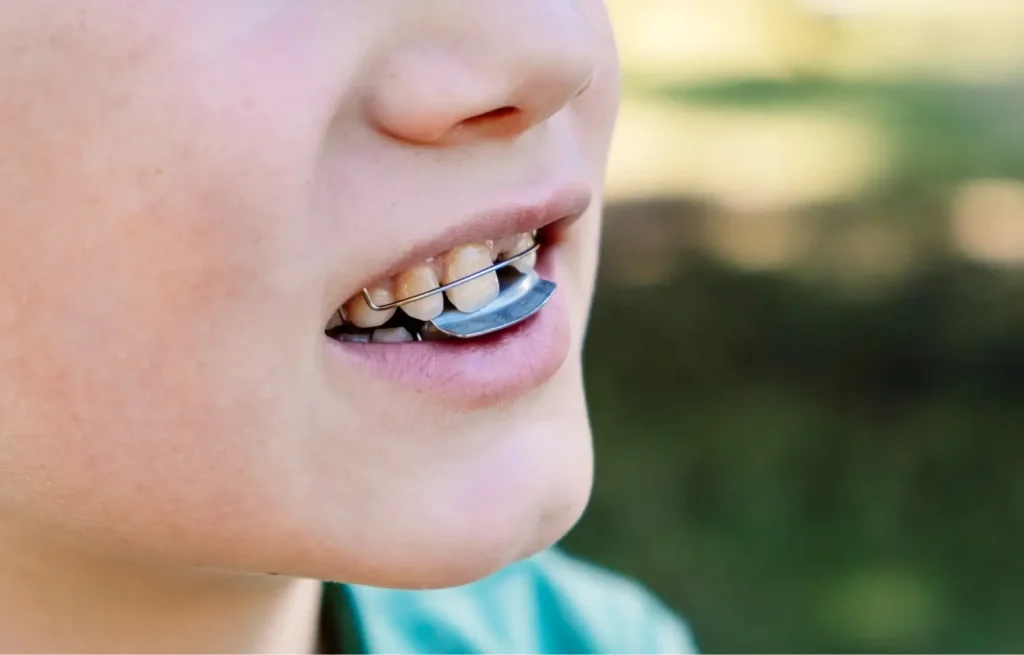
Step 1: Your Evaluation
This is like a normal check-up with some extra steps. Your dentist will ask questions about how your mouth feels and whether you experience discomfort or pain.
Then, they’ll look for some of the signs we’ve discussed—evidence of excessive tooth wear or tooth mobility, for example. They also do tests to see how your teeth fit together, looking for gaps or crowding.
The evaluation helps the dentist to understand exactly what treatment you’d benefit from and what will help you most in the long term.
Step 2: The Adjustment Process
Once the dentist has the results of your evaluation, they have many tools in their toolbox to help treat you. Sometimes, they will need to remove parts of your teeth, and sometimes, they will want to add. It depends on what will help you most.
To do this, they will use something called “articulating paper.” This is a colored piece of paper that highlights the parts of your teeth that are causing the problem. The dentist can then treat those specific areas to ensure your teeth align.
Sometimes they might use technology like a T-Scan, a modern tool that accurately scans your teeth and bite. This is very specific, helping dentists understand everything about your bite quickly and efficiently. It has an advantage over paper because it also measures the force of your bite, which helps treat it more effectively.
Step 3: Looking After Your New Bite
As we’ve suggested, fixing an overbite, underbite or crooked tooth early will save a lot of money and time later on.
Once you’ve been treated with an occlusal adjustment, it’s important to ensure the treatment lasts. This means following a post-care routine that will preserve your new bite alignment and reduce the risk of future problems.
Post-Adjustment Care
Here are some easy-to-follow instructions to help you during the weeks after your treatment. (These are meant to be helpful, but please follow your dentist’s instructions):
- Reduce stress on your teeth by sticking to softer foods
- Keep your teeth clean to help you heal
- Wear a night guard when sleeping so you don’t grind or clench
- Go to your follow-up appointments to catch and correct issues immediately
- Contact your dentist if you experience any problems – we’re here to help!
Following these instructions will help your jaw adjust more quickly, reducing wear and mobility and lessening the risk of infection.
Long-Term Benefits
Some of the most common emergency treatments in the USA include fillings (up to $250), tooth extractions (up to $600), and emergency root canals (up to $1200).
Treating your bite and maintaining proper aftercare reduces the risk of these common problems.
Occlusal adjustment makes it easier to clean your teeth because there are fewer gaps and crevices for bacteria to hide in. This reduces your risk of tooth decay, gum disease, and abscesses, making you less likely to lose a tooth or need a filling.
A proper bite adjustment means your teeth don’t move around or wear down as much. This reduces the risk of a root canal or needing an implant. If you have had composite bonding as part of your treatment, it increases the lifespan, so you won’t have to worry about further treatment in the future.
Looking after your bite makes your life more comfortable and allows you to enjoy it. You can chew and bite more easily, making mealtime an enriching experience once again. It reduces headaches and jaw pain. It makes speaking easier…
It’s fair to say that with the right treatment, occlusal adjustment can be life-changing!
Did you say yes? Visit Greenspoint Dental for Your Evaluation
If you answered yes to any of the questions in the above section, please come and see us.
Ensuring your bite is healthy is the best way to avoid future problems and eye-watering expenses.
We help you understand how your bite fits together and what we can do to improve it. This will provide a healthier mouth and a better quality of life.
Our practice always puts the comfort of our patients first, which is why we offer patient-centric appointments that cater to your specific needs.
We accept many dental insurance plans, such as CareCredit, Lending Club, and the HELPcard.
Related Blog Articles